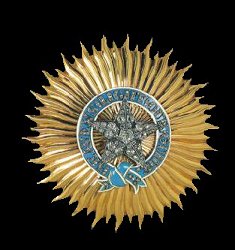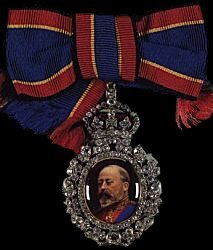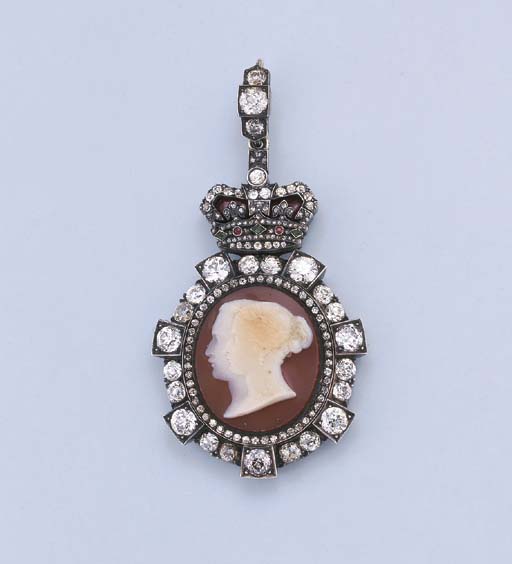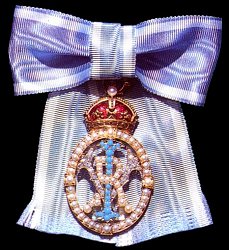 |
HM Queen Elizabeth, the Queen Mother
by Cecil Beaton, 1939 |
Elizabeth Angela Marguerite Bowes-Lyon was born on 4
August 1900, the fourth daughter and ninth child of Lord Glamis (later 14th Earl of
Strathmore and Kinghorn) and his wife Cecilia Cavendish-Bentinck. She spent he childhood in the ancestral home, Glamis Castle (the home of Macbeth), and in London.
The First World War started on her 14th birthday. Four of her brothers served in the army; one, Fergus, being killed and another becoming a prisoner of war. Glamis Castle was used as a convalescent home for wounded soldiers, and the young Lady Elizabeth assisted with welfare work.
 |
| The Duke and Duchess of York |
The Strathmore's were associates of the Royal Family. In 1922, Lady Elizabeth was a bridesmaid at the wedding of Princess Mary, the only daughter of King George and Queen Mary. The following January it was announced that she was engaged to the Duke
of York (Prince Albert Frederick Arthur George), their
second son. The Duke (known as 'Bertie') had proposed to Elizabeth at least twice but she refused, having reservations about royal life. Queen Mary, however, was a supporter of the idea, and worked behind the scenes to ensure it went ahead. The wedding took place on 26 April 1923 in Westminster Abbey. Elizabeth became Her Royal Highness The Duchess of York.
The couple
had two children, Princess Elizabeth Alexandra Mary (later Queen Elizabeth II), born on 21 April 1926 and Princess Margaret Rose, born
on 21 August 1930.
As George V's reign drew to a close, questions began to be asked about the suitability of the Prince of Wales to be king. George himself is said to have preferred the idea of succession in the York line, and to have commented that 'I pray God that my eldest son will never marry and that nothing will
come between Bertie and Lilibet and the throne'.
 |
| Coronation portrait, May 1937 |
George died on 20 January 1936 and Edward ascended to the throne as King Edward VII. Edward's wish to marry the divorcee Wallis Simpson led to a constitutional crisis, and his attempts to do so while remaining King were opposed by the Prime Minister, Stanley Baldwin, and the Church of England. Accordingly, after a reign of just 327 days, Edward abdicated on 10 December 1936 and the Duke of York became King, taking the regnal name of George VI. Elizabeth never forgave Edward for thrusting her husband to the fore, which she believed shortened his life.
On their coronation on 12 May 1937, Elizabeth became the first British-born Queen Consort since Tudor times and the last Empress of India.
On the outbreak of war in September 1939, the royal family became a symbol of the country's defiance. Queen Elizabeth resisted proposals that she and the princess be evacuated to the safety of Canada or another colony: 'The children won't go without me. I won't leave the King. And the King
will never leave.' In September 1940 Buckingham Palace was hit by bombs, and the Queen remarked that she could now look the East End of London in the face when she and her husband made one of their many visits to Blitzed areas.

Worn out by the pressures of wartime rule and suffering from cancer after a lifetime's smoking, George VI died at his Norfolk home, Sandringham House, on 6 February 1952. He was succeeded by his daughter, the current Queen, and Elizabeth began her long period of widowhood, taking the title Queen Mother. She carried on with public duties, including many tips overseas, until well into her 70s.
In retirement, Elizabeth enjoyed her hobbies of fly-fishing and horse-racing. She also refurbished Glamis Castle and was a discerning (if discrete) art collector - her extravagent lifestyle led to a large overdraft with the royal bankers. She was consistently popular with the public - even escaping the backlash against the Windsors following the death of Diana, Princess of Wales.
Queen Elizabeth died on 30 March 2002, six weeks after attending the funeral of her youngest daughter, Princess Margaret. At 101, she was the longest-lived member of the royal family in history; a record she held until the following year, when she was overtaken by Princess Alice, the Duchess of Gloucester. She lay in state at Westminster Hall for three days before a funeral in Westminster Abbey, and was buried in St George's Chapel, Windsor, alongside her husband.
 |
| The Prince of Wales stands vigil at his grandmother's lying-in-state |
Honorary Military Appointments
 United Kingdom
United Kingdom
- Colonel-in-Chief of the King's Own Yorkshire Light Infantry (1927-1968)
- Honorary Colonel the Hertfordshire Regiment (1930-1961)
- Colonel-in-Chief of the Queen's Bays (2nd Dragoon Guards) (1930-1959)
- Royal Honorary Colonel, The London Scottish (1935-2002)
- Colonel-in-Chief of the Black Watch (Royal Highland Regiment) (1937-2002)
- Colonel-in-Chief of the 7th (Queen's Own) Hussars (1947-1958)
- Colonel-in-Chief of the Bedfordshire and Hertfordshire Regiment (1947-2002)
- Colonel-in-Chief of the Manchester Regiment (1947-2002)
- Commandant-in-Chief of the Women's Royal Army Corps (1949-2002)
- Royal Honorary Colonel of the City of London Yeomanry (Rough Riders) (1952-2002)
- Colonel-in-Chief of the 9th Queen's Royal Lancers (1953-2002)
- Colonel-in-Chief of the Royal Army Medical Corps (1942-2002)
- Colonel-in-Chief of the Inns of Court Regiment (1957-1961)
- Colonel-in-Chief of the 3rd East Anglian Regiment (1958-2002)
- Royal Honorary Colonel of the University of London OTC (1958-2002)
- Colonel-in-Chief of the King's Regiment (1958-2002)
- Colonel-in-Chief of the Queen's Own Hussars (1958-2002)
- Colonel-in-Chief of the 1st The Queen's Dragoon Guards (1959-2002)
- Colonel-in-Chief of the 9th/12th Royal Lancers (Prince of Wales's) (1960-2002)
- Royal Honorary Colonel of the Bedfordshire and Hertfordshire Regiment (1961-2002)
- Royal Honorary Colonel of the Inns of Court and City Yeomanry (1961-2002)
- Colonel-in-Chief of the Royal Anglian Regiment (1964-2002)
- Royal Honorary Colonel of the Royal Yeomanry (1967-2002)
- Colonel-in-Chief of the Light Infantry (1968-2002)
- Colonel-in-Chief of the Queen's Own Hussars (The Queen's Own and Royal Irish) (1993-2002)
- Royal Honorary Colonel of the King's Own Yorkshire Yeomanry (Light Infantry) (1996-2002)
- Commandant-in-Chief of the Women's Royal Air Force, (1949-1994)
- Commandant-in-Chief of the RAF Central Flying School (1960-20020
- Commandant-in-Chief of the Women, Royal Air Force (1994-2002)
- Australia
- Colonel-in-Chief of the Royal Australian Army Medical Corps (1953-2002)
- Canada
- Colonel-in-Chief of the Toronto Scottish Regiment (Queen Elizabeth the Queen Mother's Own) (1938-2002)
- Colonel-in-Chief of the Black Watch (Royal Highland Regiment) of Canada (1947-2002)
- Colonel-in-Chief of the Royal Canadian Army Medical Corps (1953-1974)
- Colonel-in-Chief of the Canadian Forces Medical Service (1977-2002)
- New Zealand
- Colonel-in-Chief of the Royal New Zealand Army Medical Corps (1977-2002)
- South Africa
- Colonel-in-Chief of the Witwatersrand Rifles (1947-1961)
- Colonel-in-Chief of the Queen's Own Cape Town Highlanders (1947-1961)
- Colonel-in-Chief of the Transvaal Scottish (1956-1961)
- Southern Rhodesia
- Honorary Commissioner of the British South Africa Police (1955-1965)
 |
Wearing the insignia of the Order of the Garter.
As a lady she wears the garter on her arm |
Orders, Decorations and Medals
Orders
 Order of the Garter
Order of the Garter
Royal Lady (LG), 1936
Order of the Thistle
Lady (LT), 1937
Queen Elizabeth was the first female member of the order.
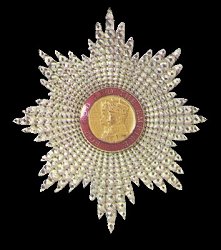 Order of the British Empire
Order of the British Empire
Dame Grand Cross (GBE), 1927
Royal Victorian Order
Dame Grand Cross (GCVO), 1937, and Grand Master, 1937-2002
Venerable Order of St John of Jerusalem
Dame Grand Cross (DGStJ), 1926

Order of the Crown of India
Companion (CI), 1931
 Royal Family Order of King George V
Royal Family Order of King George V
1923
Royal Family Order of King George VI
1937
 Royal Family Order of Queen Elizabeth II
Royal Family Order of Queen Elizabeth II
1952
Commonwealth Orders
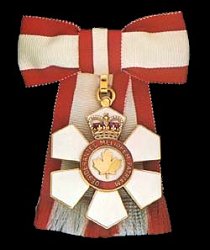 Canada. Order of Canada
Canada. Order of Canada
Honorary Companion (CC), 2000
 New Zealand
New Zealand.
Order of New Zealand
Additional Member (ONZ), 1990
Decorations
 Royal Victorian Chain
Royal Victorian Chain
1937
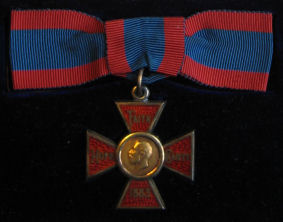 Royal Red Cross
Royal Red Cross (RRC), 1936
 Canadian Forces Decoration
Canadian Forces Decoration (CD) and five bars
Commemorative Medals
 King George V Silver Jubilee Medal
King George V Silver Jubilee Medal, 1935
 King George VI Coronation Medal, 1937
King George VI Coronation Medal, 1937
 Queen Elizabeth II Coronation Medal 1953
Queen Elizabeth II Coronation Medal 1953
 Queen Elizabeth II Silver Jubilee Medal
Queen Elizabeth II Silver Jubilee Medal 1977
Foreign Awards
- Yugoslavia. Order of St. Sava - Grand Cross, 1923
- Afghanistan. Order of the Supreme Sun - Member First Class, 1928
- Japan. Order of the Precious Crown - Grand Cordon, 1937
- France. National Order of the Legion of Honour - Grand Cordon, 1937
- Romania. Order of the Crown of Romania - Grand Cross, 1938
- France. Red Cross Medal, 1945
- Norway. Norwegian War Cross, 1945
- Nepal. Order of the Ojaswi Rajanya - Grand Cross, 1948
- Netherlands. Order of the Netherlands Lion - Knight Grand Cross, 1950
- Greece. Order of St Olga and St Sophia - Member, 1950
- Peru. Order of the Sun - Grand Cross, 1960
- Tunisia. Order of Independence - Grand Cordon, 1961






























